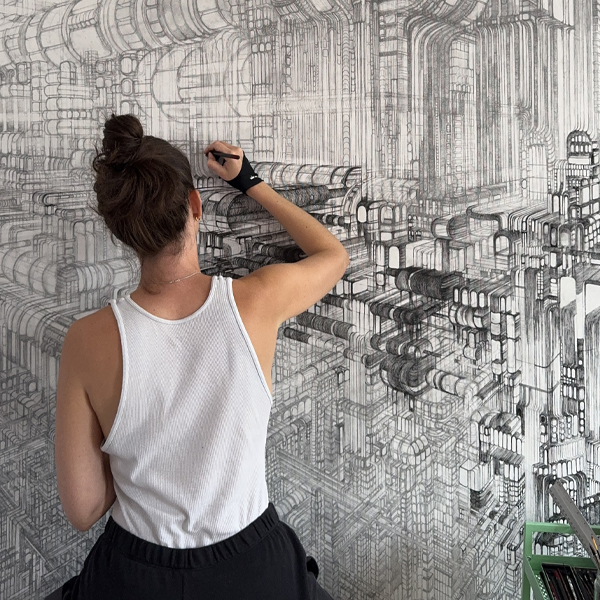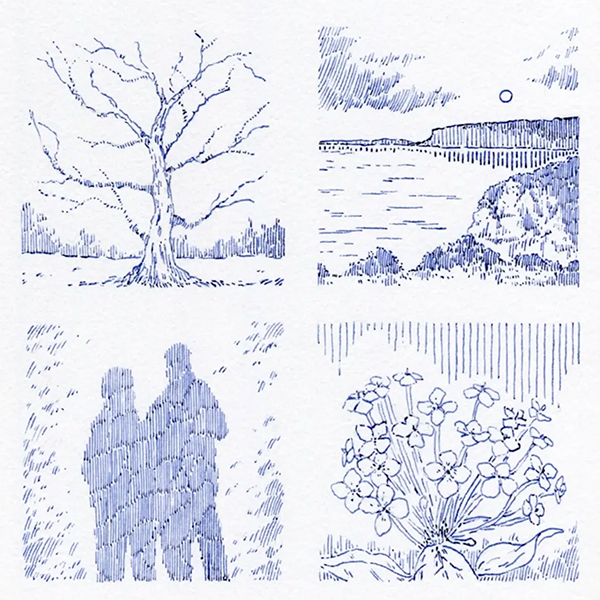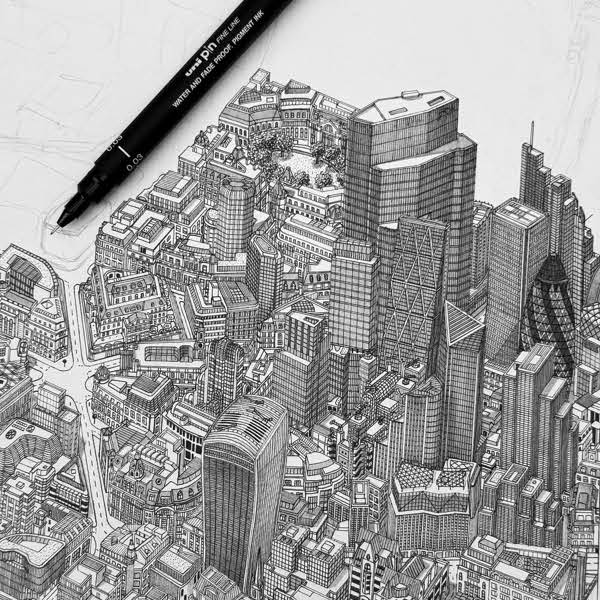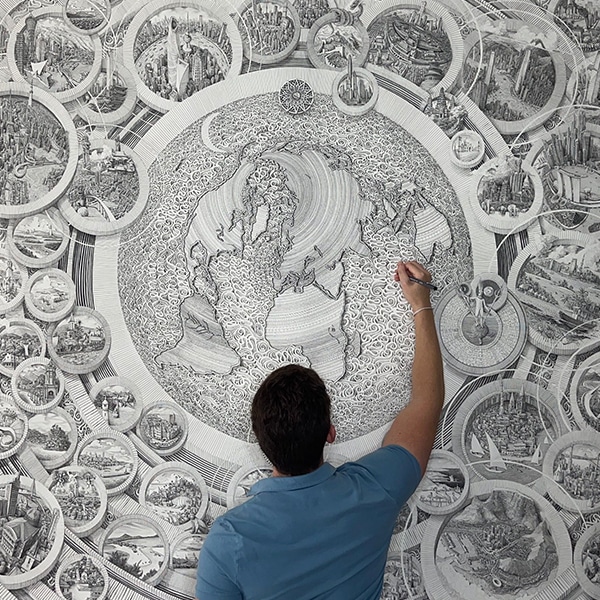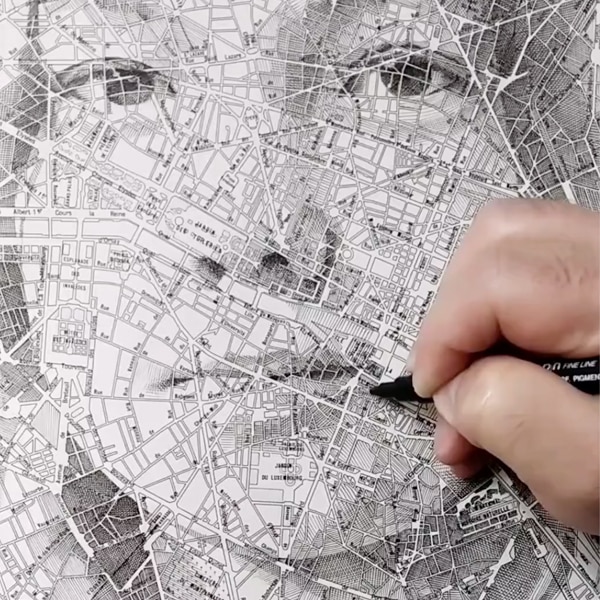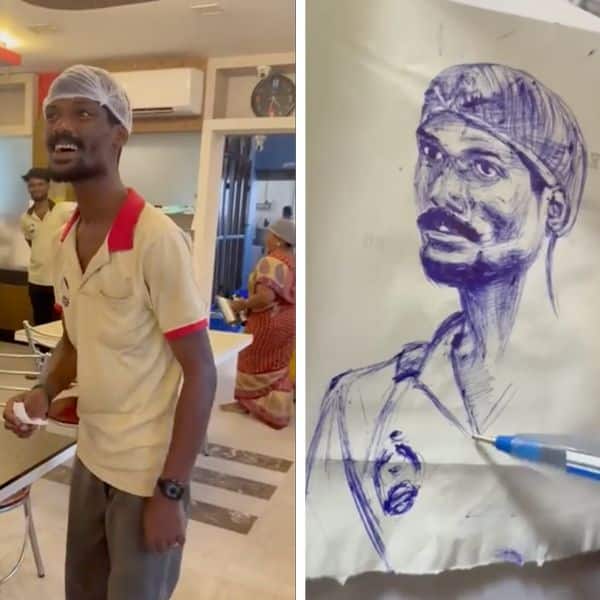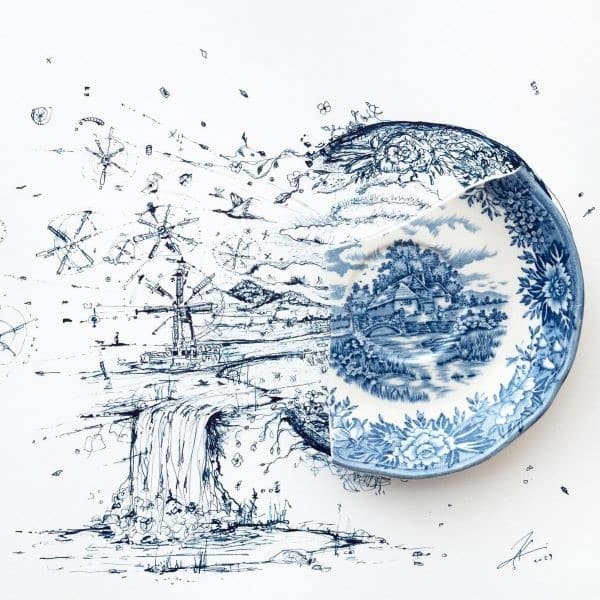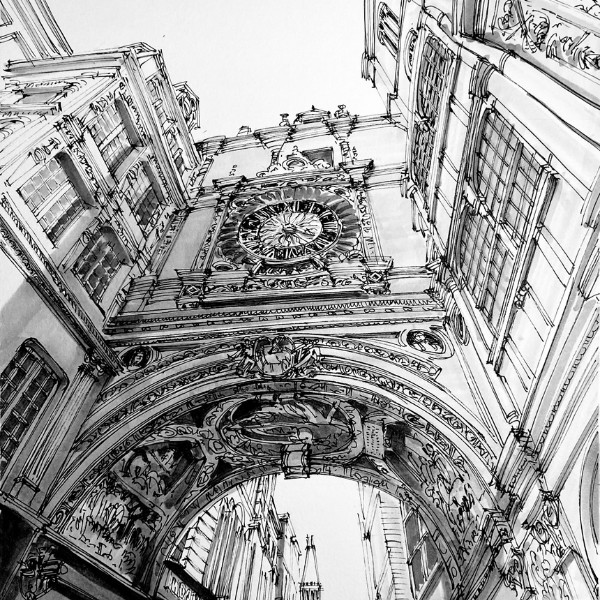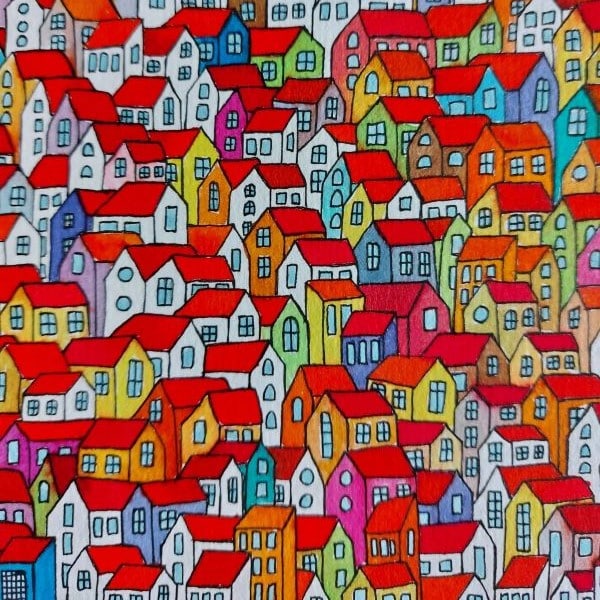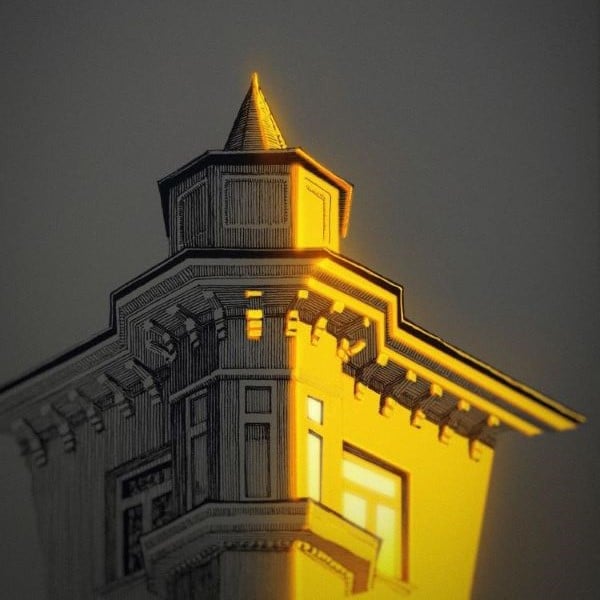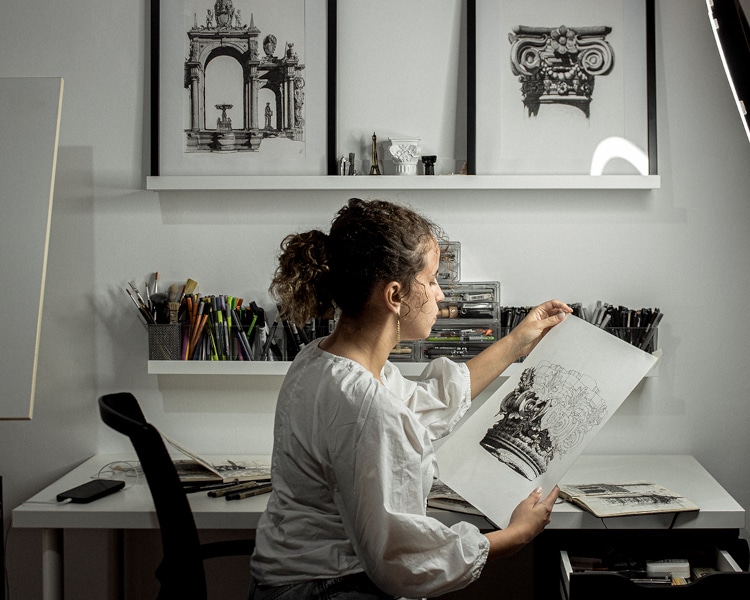
For Antonella Positano, her passion for art and architecture traces back to her childhood. “As a child, I loved creating imaginary houses with LEGO, and many of my childhood drawings portrayed landscapes and little houses,” the artist tells My Modern Met. Today, this love serves as the foundation of her architectural illustrations, made with dynamic streaks of black ink that breathe life into these buildings.
“The purpose when I choose an architectural subject to represent is to highlight its essence through my hand,” Positano says. “I often let myself be guided by the interaction I feel with a particular subject, but it's almost always them choosing me, not the other way around. I don’t have any particular preferences.”
A fan of Giovan Battista Piranesi, she always looks for volume that can translate into strong contrasts and let her play with shadows. “For this reason, I prefer intricate subjects with very dense textures. It’s about capturing what others usually can’t see: I translate geometries and volumes into lines that bring out a drama that would otherwise go unnoticed,” she adds.
Positano, who is about to finish her Architecture degree, uses high-quality photographs as references for her illustrations. “The images allow me to carefully analyze the particulars and work calmly on the composition, reflecting on the final result I want to achieve,” she explains. “I use them as references, but they’re never a guide to follow strictly for completing the work: at that point, it would just be a faithful copy, and I love authenticity.” Still, she hopes to draw en plein air in the future, as it has previously allowed her to breathe in the true atmosphere of a place.
While she has experimented with other tools, Positano confesses that nothing matches the thrill of black ink. “I love the gestural quality of using a pen and the fact that I can modulate the stroke however I like. I use ink in my work because I see it as the link between the past and present,” Positano says. “This way, the work becomes tangible: it transcends time and the ephemeral. Every detail is a symbol of my desire to go beyond, to capture something that others don’t see.”
As for her canvases, Positano explains that using sketchbooks or a single sheet of paper has its perks. “Working in a sketchbook feels like being in a neutral place where I can express myself without exercising total control and without the pressure of needing to achieve a specific result.
Each page is a fragment of an artistic journey that I can revisit, reread, and reinterpret over time. Drawing on a single paper, on the other hand, fills me with a deep, almost visceral satisfaction. It gives me control and discipline, allowing me to refine every single stroke with awareness.”
Ultimately, Positano shares that she doesn’t seek recognition or commercial success but the power to move others through the universal language of architecture. “I know I’ve succeeded when I see emotions like inspiration in the eyes of those who view my works at exhibitions.”
For those hoping to follow her steps, she has a message. “I want people to know that it’s not necessary to have a perfect studio or to use expensive materials to express their creativity. It doesn’t matter where one draws or with what tools: what truly matters is becoming aware of one’s creative process and the power one has in mastering the art.”
Antonella Positano creates architectural illustrations with dynamic streaks of black ink that breathe life into her buildings.
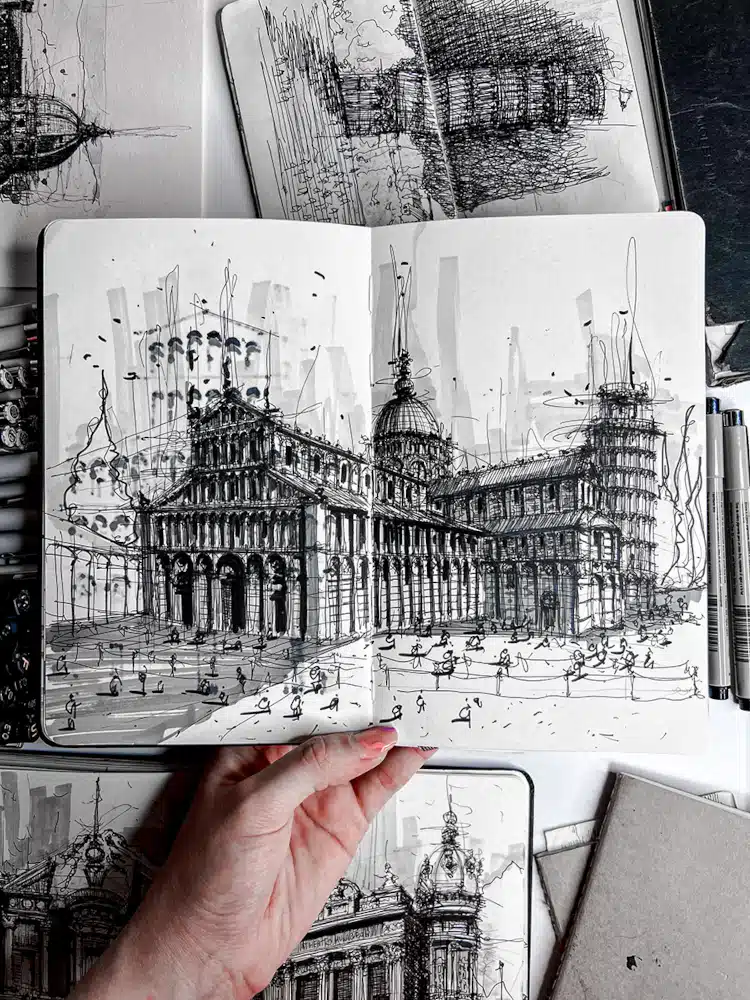
“The purpose when I choose an architectural subject to represent is to highlight its essence through my hand,” Positano says.
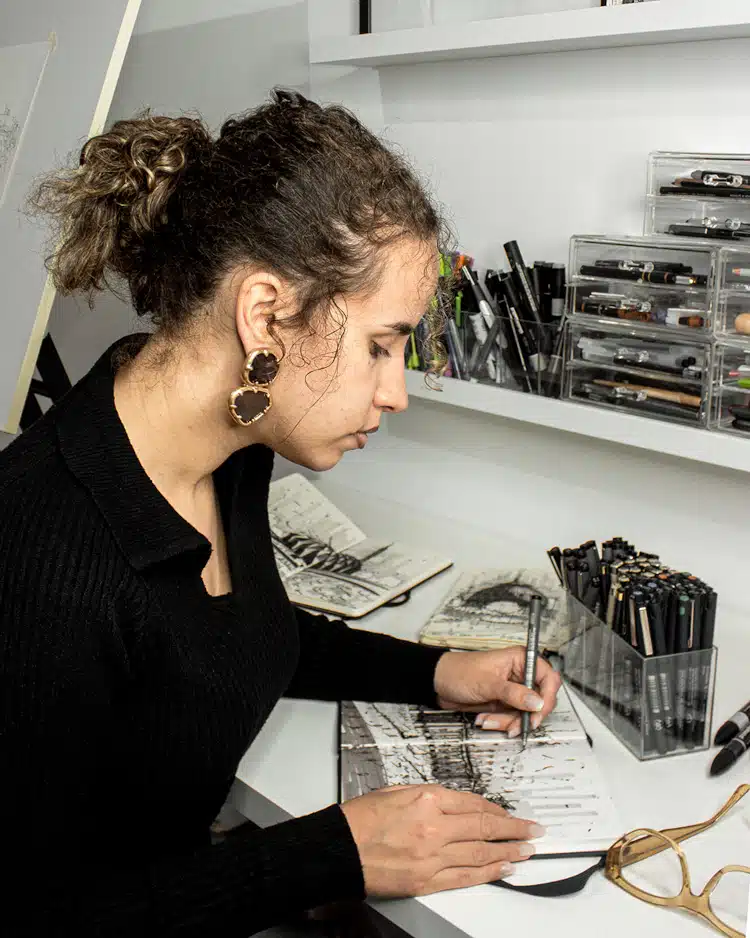
Positano, who is about to finish her Architecture degree, uses high-quality photographs as references for her illustrations.
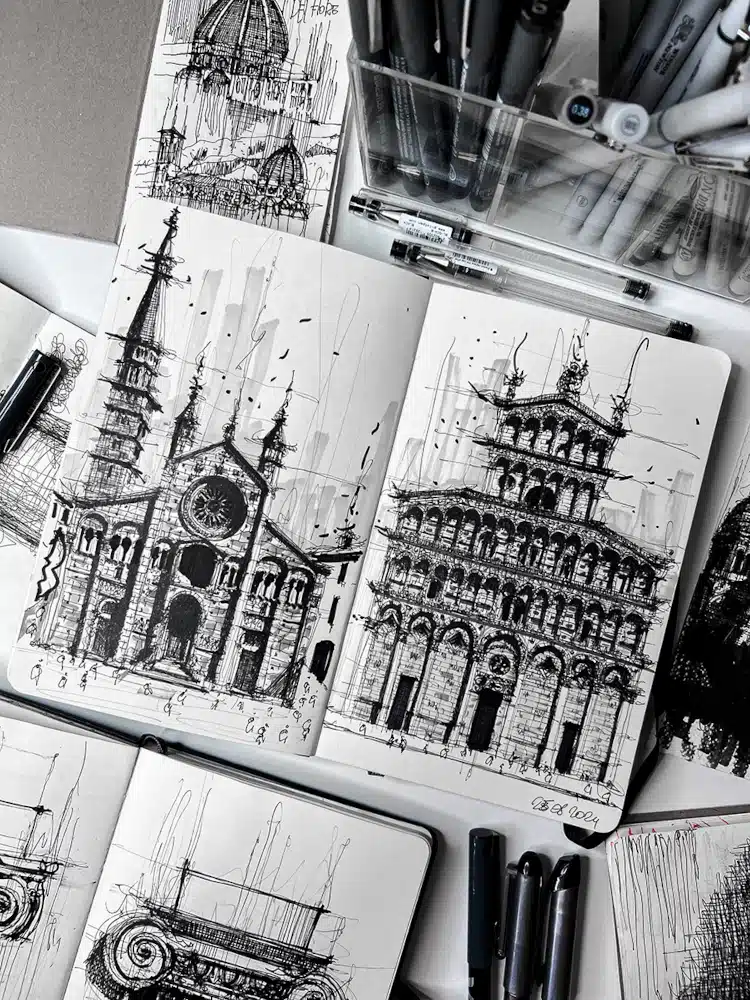
“I prefer intricate subjects with very dense textures. It’s about capturing what others usually can’t see: I translate geometries and volumes into lines that bring out a drama that would otherwise go unnoticed,” she adds.
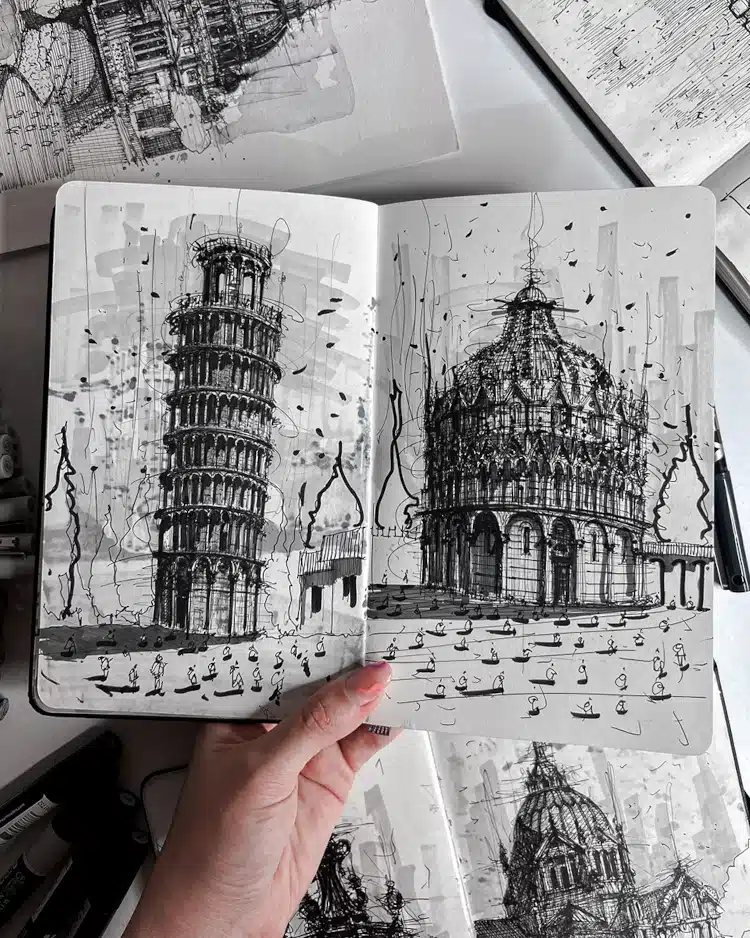
While she has experimented with other tools, Positano confesses that nothing matches the thrill of black ink.

“I love the gestural quality of using a pen and the fact that I can modulate the stroke however I like. I use ink in my work because I see it as the link between the past and present.”
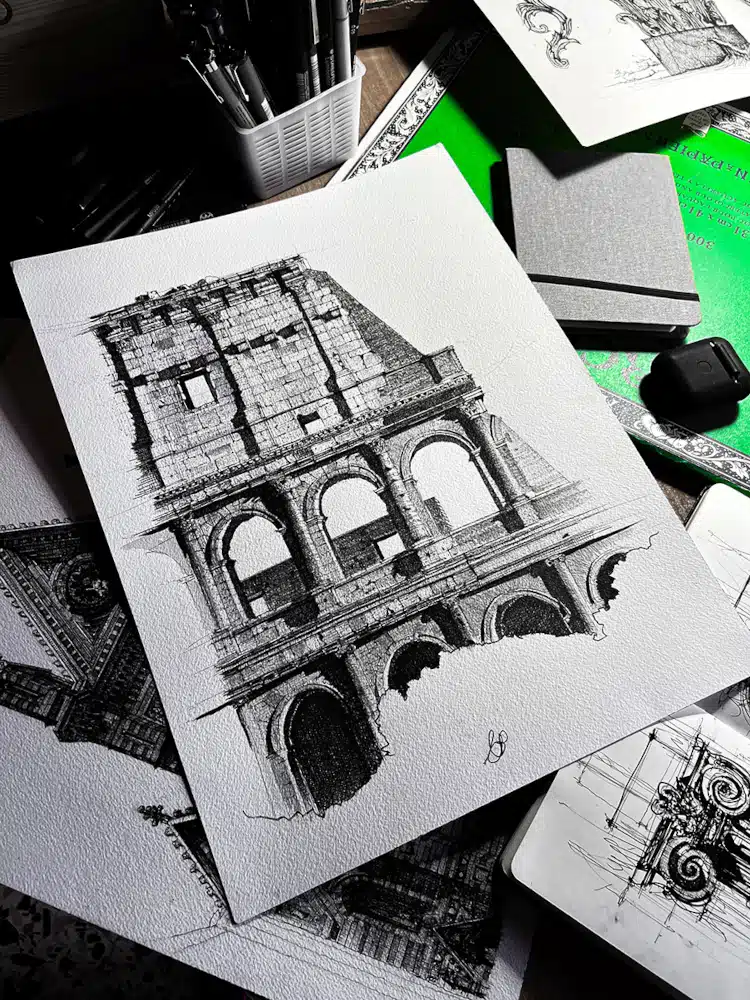
Positano explains that both sketchbooks and a single sheet of paper have its perks.
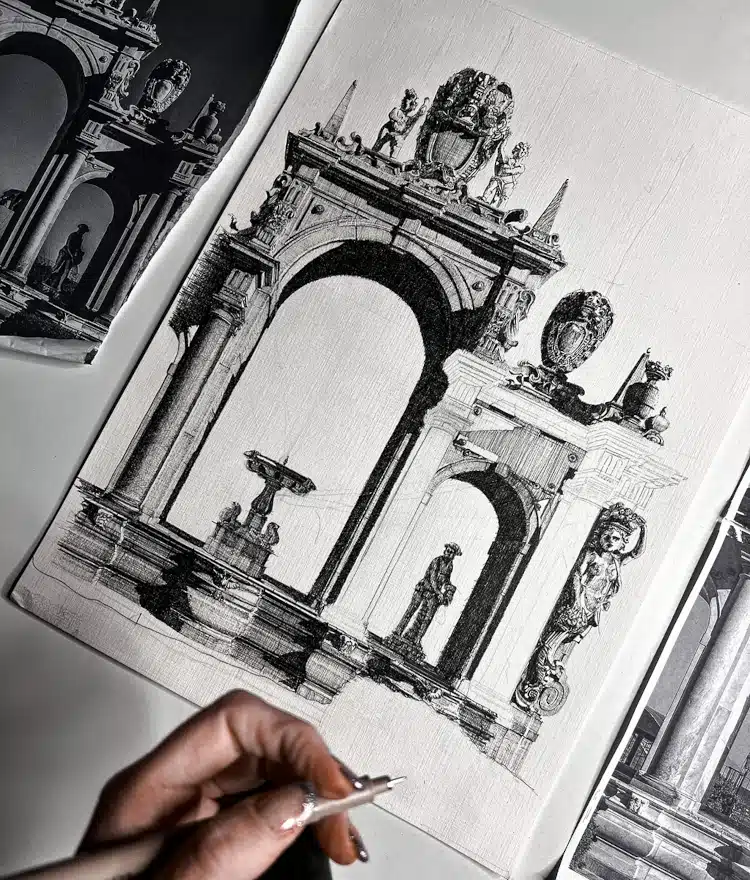
“It doesn’t matter where one draws or with what tools: what truly matters is becoming aware of one’s creative process and the power one has in mastering the art.”
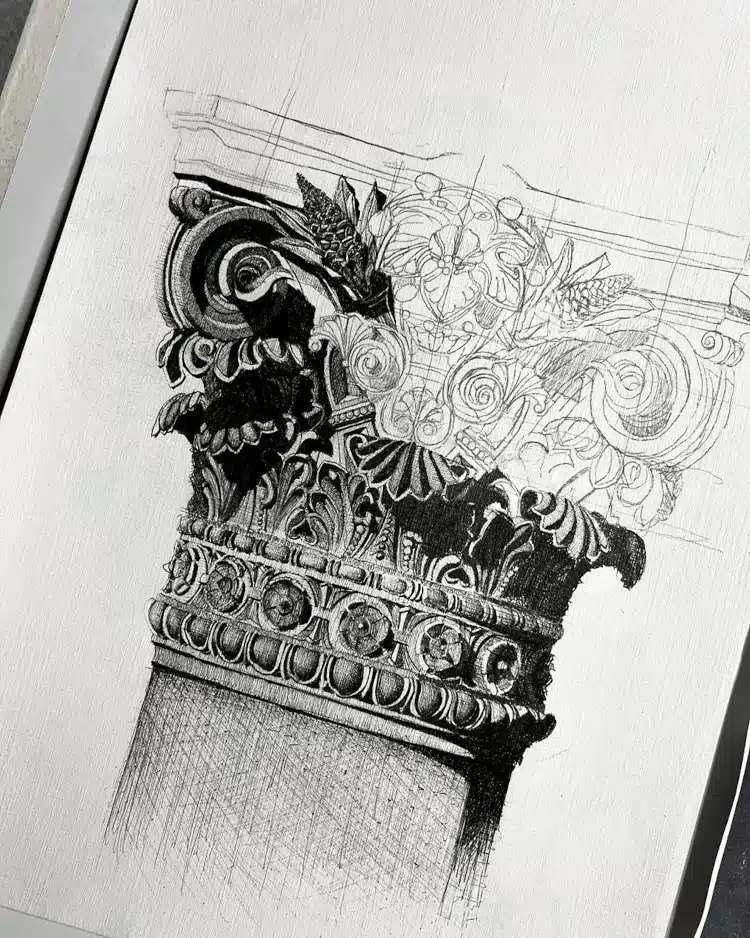
Antonella Positano: Instagram
My Modern Met granted permission to feature photos by Antonella Positano. Quotes have been edited for length and clarity.
Related Articles:
Artist Captures the Soul of Quaint Urban Architecture With Expressive Marker Sketches
Illuminating Architecture Drawings Feature Gorgeous Glowing Windows
Stunning Ink and Colored Pencil Architecture Drawings Inspired by Old-World Europe
Intricate Architecture Drawings Capture the Beauty of Gothic Buildings Across Europe











































































